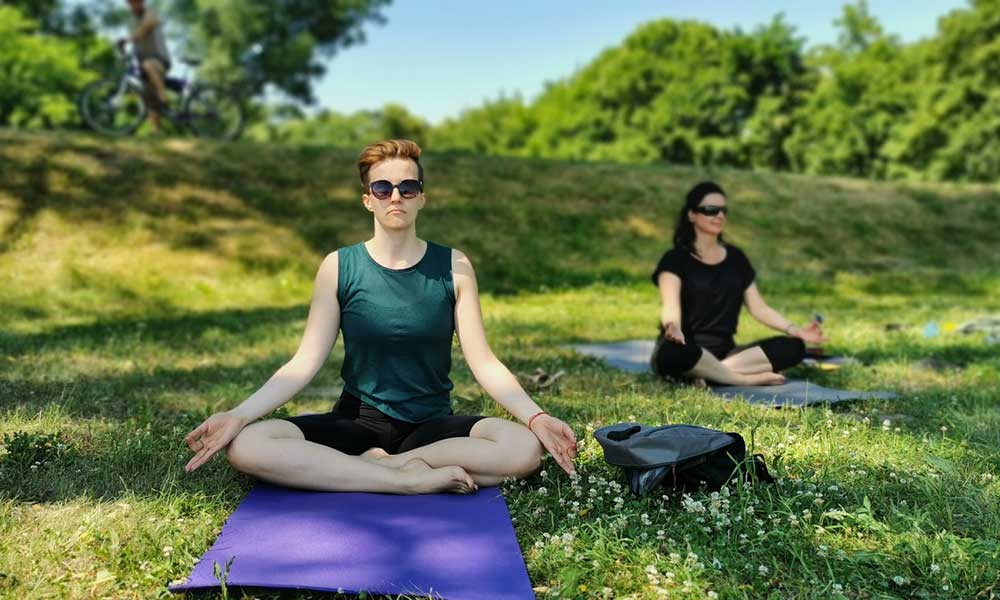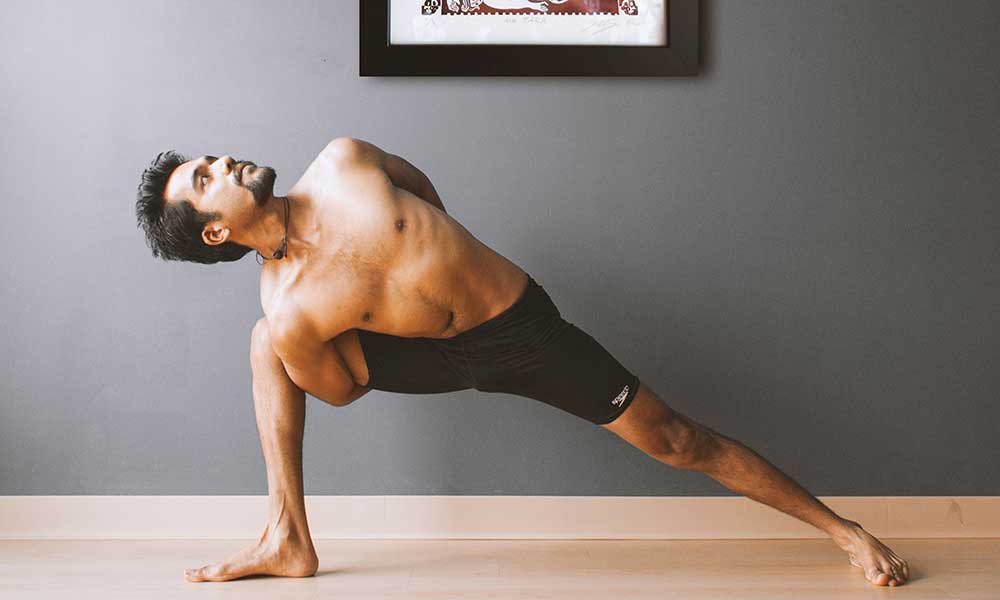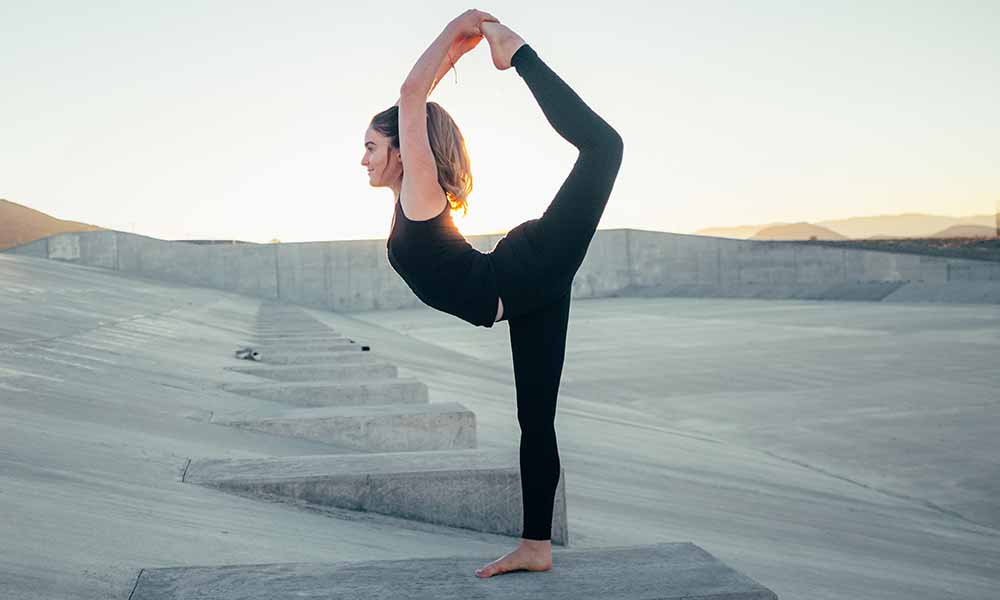Many styles of yoga were born of ancient Hatha yoga practices.
Kripalu Yoga is one of these modernized forms of yoga with Hatha roots.
While the majority of yoga styles focus on meditation and breathing, Kripalu places an equal importance on the body, mind and soul.
Keep reading to learn more about Kripalu Yoga.
What is Kripalu Yoga?
Kripalu Yoga is a modern, gentle style of Hatha Yoga based on a philosophy that differs somewhat from the traditional.
While the goal of traditional yoga is to reach your highest spiritual state (self-realization), the goal of Kripalu Yoga is to strengthen your body, open your heart, and clear your mind.
The word ‘kripalu’ means compassion, therefore Kripalu Yoga was designed to help us acknowledge and honor the uniqueness of every individual.
Through this practice, you will learn to tune into your inner wisdom to become more familiar with your own body.
Kripalu integrates physical postures, mantras, mudras, and breathing exercises to help you tap into your “prana” or “life force” energy. Some also refer to prana as a “pulse.”
During Kripalu yoga, you will often focus on controlling this pulse, which most people would interpret as the breath of the body.
Kripalu yoga is comprised of three stages:
- A focus on proper alignment of the body while holding poses for a short period of time.
- A deepening of awareness to the sensations you might feel in the body as you hold the poses for a longer period.
- A meditative state where the yogi is guided by their intuition to move according to the flow of prana.
The most advanced Kripalu Yoga postures involve all three of these stages.
The history of Kripalu Yoga
Kripalu Yoga wouldn’t be what it is today without Swami Kripalu.
Originally born with the name Saraswati Chandra, Kripalu was born in Gujarat, India in 1913.
He began studying yoga, Ayurveda, physiology, psychology and ancient texts, including Patanjali’s Yoga Sutras when he was 17 years old.
In 1941 when he was initiated as a renunciate and swami, the name ‘Swami Kripalvananda’, which means “compassionate one” was given to him.
Swami Kripalu would go on to teach many students over the next few decades.
He was an inspirational speaker, writer and teacher who had a knack for breathing life back into the ancient teachings of yoga by making them digestible to the modern yoga student.
At the age of 37, Swami Kripalu immersed himself into an intensive practice routine, spending hours of his day doing asanas (physical postures), meditation and pranayama (breathing exercises).
Kripalu Yoga was introduced to the Western World in 1960 when Amrit Desai, a close disciple of Swami Kripalu, moved to the United States to study at the Philadelphia College of Art.
Desai started teaching yoga classes that were filling up quickly as the enthusiasm around yoga spread through the Philadelphia area like wildfire.
In 1966, Desai and nine of his peers founded the nonprofit Yoga Society of Pennsylvania to help to promote the science and philosophy of yoga in the West.
A few years later, Desai, his wife, Urmila; and some of his best students opened a small residential yoga facility in Sumneytown, Pennsylvania.
This would later lead to the making of the first Kripalu Yoga Teacher Training, which opened in 1973.
In 1975, Kripalu started a much larger yoga center in Summit Station, Pennsylvania.
The facility, that we now know as Kripalu Healing Arts, included a residential center offering yoga instruction, a yoga curriculum, holistic health and self-discovery programs, on-site meals, massages, and other health services.
Swami Kripalu died in India in 1981, but spent the last four years of his life living between both of his Pennsylvania yoga facilities , delivering inspirational messages and teachings on love, practice, and self-development.
His faculty continued to share his teachings and philosophy with yoga students in the United States.
Kripalu Yoga Poses
The postures done in Kripalu Yoga are similar to the poses you will see in a gentle Hatha Yoga practice such as pigeon pose, seated spinal twists, posterior stretches, dancer pose, and so on.
That being said, the focus in Kripalu Yoga is more about finding out what feels right in your body than on the poses themselves.
Much of Kripalu Yoga is about understanding your body, how it feels during certain poses and how to listen to your body.
In Kripalu Yoga, students are often taught about “press points” that are attuned to your body so that you will learn to do poses in a way best suited for your body instead of doing them by the book.
This particular style of yoga is an excellent choice for beginners since it is a gentle form of Hatha.
Kripalu Yoga is about accepting yourself and your individuality, therefore it is adaptable and open for people of all ages, skill levels, sizes, and circumstances.
How is Kripalu Yoga different than other styles of yoga?
Kripalu Yoga is essentially a gentler version of Hatha Yoga. Like traditional Hatha, Kripalu consists of asana, breathing techniques, mudras and meditation, but it has a much stronger focus on the sensations felt in the body.
In a traditional Hatha Yoga class, you might be guided to focus more on breathing and meditation than on the physical body. However, Kripalu Yoga teaches you to focus on practicing physical postures in a way that works best for you.
Kripalu’s philosophy encourages students to accept and love themselves and others as it extends its invitation to practice to people from all walks of life.







